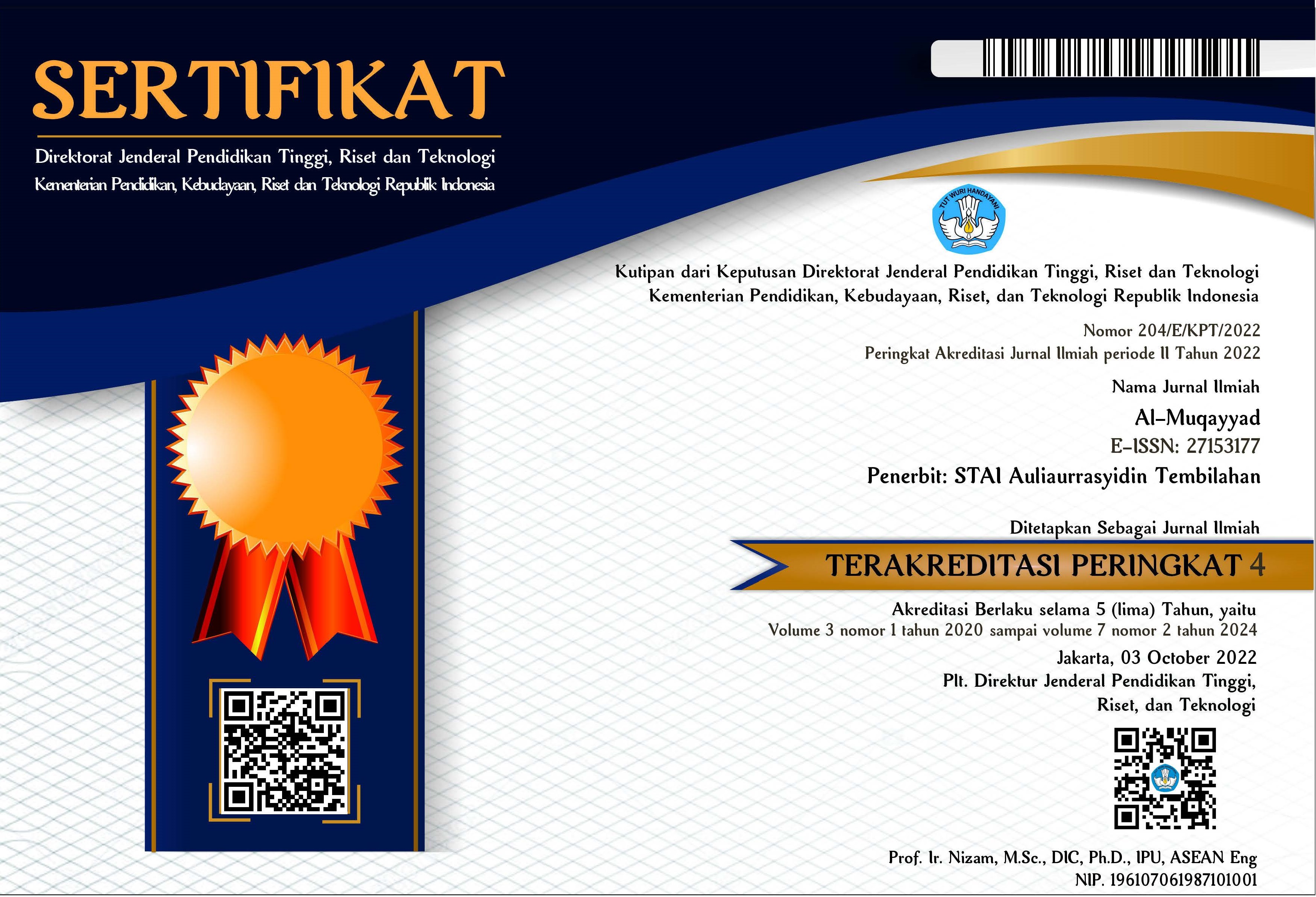Penerapan Sistem Bagi Hasil Produk Tabungan Mudharabah Bank Riau Kepri Syariah Tembilahan
DOI:
https://doi.org/10.46963/jam.v5i2.807Keywords:
Profit Sharing, iB Mudharabah, Revenue Sharing, HI-1000Abstract
This study aims to find out how the application of the profit-sharing system for mudharabah savings products at Bank Riau Kepri KCP Tembilahan. This type of qualitative research with purposive sampling technique consisting of 4 employees and 4 customers. Interview and documentation data collection techniques as well as data analysis techniques consist of reduction, display and verification as well as drawing conclusions. The results showed that the implementation of the profit-sharing system for iB mudharabah savings products at Bank Riau Kepri Syariah when viewed from the agreement, profit ratio, cooperation, transparency, timeliness, and profit was appropriate, even though the process of notifying the amount of profit sharing every month was not carried out and determining the profit ratio iB mudharabah savings products are not carried out with customers of savings products. Based on the results of the study it can be concluded that the application of a partial profit-sharing system for mudharabah savings products at Bank Riau Kepri Syariah KCP meets the profit-sharing indicators, the calculation system uses a revenue sharing system with the HI-1000 method, namely a calculation system per 1000 customer funds.
Downloads
References
Akpan, J., & Beard, L. (2014). Assistive technology and mathematics education. Journal of Educational Research, 2(3), 219–222.
Asfaroh, J., Rosana, D., & Supahar. (2017). Development of CIPP model of evaluation instrument on the implementation of project assessment in science learning. International Journal of Environmental and Science Education, 12(9), 1999–2010.
Hadjichristou, C. (2008). A Comparative study on math’s education rendered in the two communities on the Island of Cyprus. International Journal of Environmental & Science Education, 2(2), 38–43.
Hasselbring, T., & Bausch, M. (2006). Assistive technologies for reading. Educational Leadership, 63(4), 72–75.
Hasselbring, T., & Glaser, C. H. (2000). Use of computer technology to help students with special needs. Children and Computer Technology, 10(2), 102–122.
McCarthy, P., & Shevlin, M. (2017). Opportunities and challenges in secondary education for blind/vision-impaired people in the Republic of Ireland. Disability and Society, 32(7), 1007–1026. https://doi.org/10.1080/09687599.2017.1337564
Mensah, F. (2017). Ghanaian senior high school students’ error in learning of trigonometry. International Journal of Environmental & Science Education, 12(8), 1709–1717.
National Council of Teachers of Mathematic (NCTM). (2000). Principle and Standards for School Mathematics. NTCM.
Wong, M., & Cohen, L. (2011). School, family, and other influences on assistive technology use: Access and challenges for students with visual impairment in Singapore. British Journal of Visual Impairment, 29(2),130–144.
Downloads
Published
Issue
Section
License
Copyright (c) 2022 Veni Lestari, Sai'in Sai'in

This work is licensed under a Creative Commons Attribution-ShareAlike 4.0 International License.
Authors who publish with this journal agree to the following terms:
1. Copyright on any article is retained by the author(s).
2. The author grants the journal, right of first publication with the work simultaneously licensed under a Creative Commons Attribution shareAlike 4.0 International License that allows others to share the work with an acknowledgment of the work’s authorship and initial publication in this journal.
3. Authors are able to enter into separate, additional contractual arrangements for the non-exclusive distribution of the journal’s published version of the work (e.g., post it to an institutional repository or publish it in a book), with an acknowledgment of its initial publication in this journal.
4. Authors are permitted and encouraged to post their work online (e.g., in institutional repositories or on their website) prior to and during the submission process, as it can lead to productive exchanges, as well as earlier and greater citation of published work.
5. The article and any associated published material is distributed under the Creative Commons Attribution-ShareAlike 4.0 International License





2.png)



